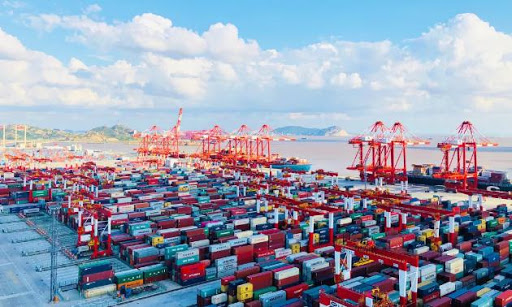- Home
- .
- What you need to know about the “Port of Loading”
What you need to know about the “Port of Loading”
"Port of Loading" is sometimes referred to
as "transit place", which means that the goods go from the port of
departure to the port of destination, passing through the third port in the
itinerary, the transportation means stop, load and unload the goods, supply and
other operations, and the goods are changed into the transportation means The
port that continues to be shipped to the destination is the Port of Loading.
There are not only one-time transfers by shipping companies, but also shippers
who change orders for tax exemption reasons.

Status of Port of Loading
Port of Loadings are generally basic ports. Therefore, ships calling at Port of Loadings are generally large ships from the main international shipping routes and feeder ships to and from various ports in the region.
Unloading port/delivery place=Port
of
Loading/destination port?
If it only refers to the sea, the port of discharge
really refers to the port of transit, and the place of delivery refers to the
port of destination. When booking a space, you generally only need to indicate
the place of delivery, and whether or not to transit or which Port of Loading
is to be determined by the shipping company.
In the case of multimodal transport, the port of
discharge refers to the port of destination, and the place of delivery refers
to the destination. Since different ports of unloading will produce different
transshipment rates, the port of unloading must be indicated when booking.
The role of Port of
Loadings
Duty Free
What I want to talk about here is segment transfer.
Setting the Port of Loading as a free trade port can achieve the purpose of
tariff reduction or exemption. For example, Hong Kong is a free trade port, if
goods are transferred to Hong Kong; goods that are not specially regulated by
the state can basically achieve the purpose of export tax exemption, and there
will even be tax rebate subsidies.
Hold Goods
This is talking about the shipping company transit. In
international trade, various factors cause the goods to be unable to move
forward and need to hold goods. The shipper can apply to the shipping company
for detention before arriving at the Port of Loading. After the trade problem
is resolved, shipment to the port of destination. This is often easier to
operate than a direct ship. But the cost is not cheap.
Port of Loading code
A ship will call at multiple ports, so there are many
incoming port codes filed at the same terminal, which is the subsequent Port of
Loading code. If the code is filled in at will, if the code is not matched, the
container will not be able to enter the port. If it matches but is not a real
Port of Loading, then even if it enters the port and gets on the ship, it will
unload at the wrong port. If the modification is correct before the ship is
allocated, the box may also be unloaded at the wrong port. Retransshipment
costs are very high, and high fines may also be required.
About transhipment clause
In the process of international cargo transportation,
due to geographical or political and economic reasons, cargo needs to be
transshipped at certain ports or other locations. When booking, you need to
limit the Port of Loading. But ultimately depends on whether the shipping
company accepts transit here.
If accepted, the provisions of the Port of Loading are
clear, usually adding a note after the destination port, usually through
"VIA (via, through)" or "W/T (with transshipment at...,
in...transshipment)" connection.
In our actual operation, we cannot directly treat the Port
of Loading as the destination port, so as to avoid transportation errors and
unnecessary losses. Because the transit port is only a temporary port for the
transfer of goods, not the destination of the final goods.
